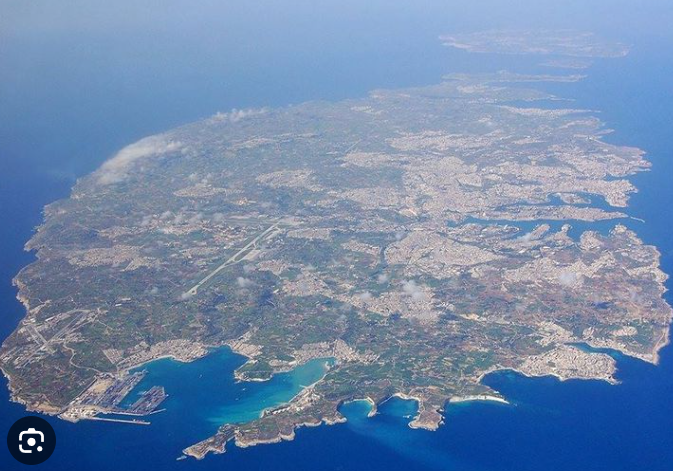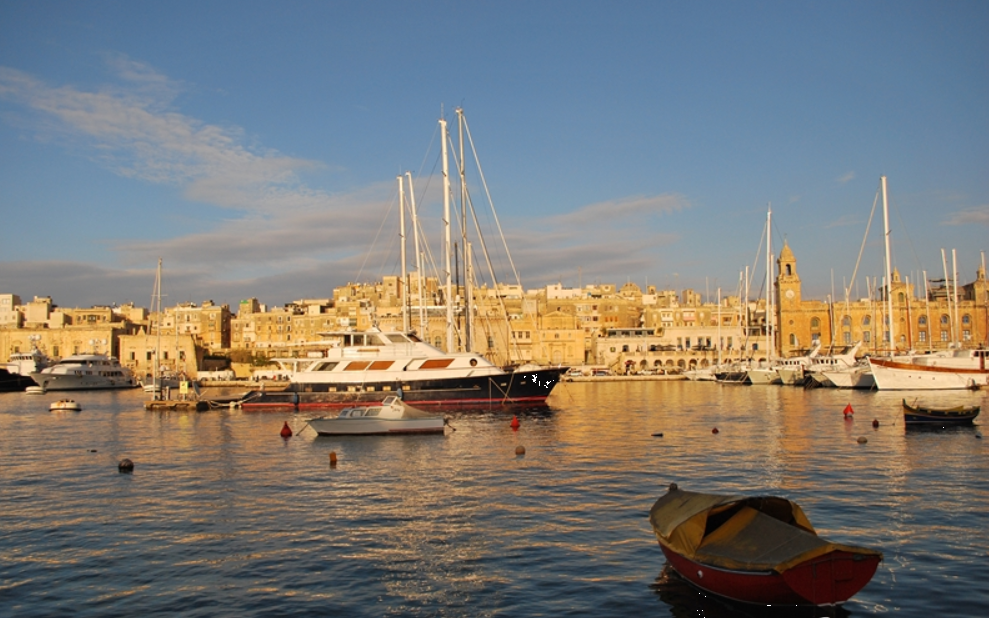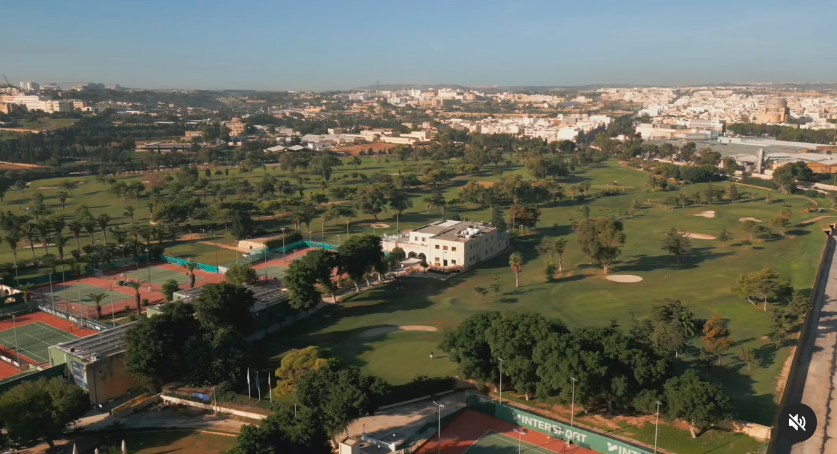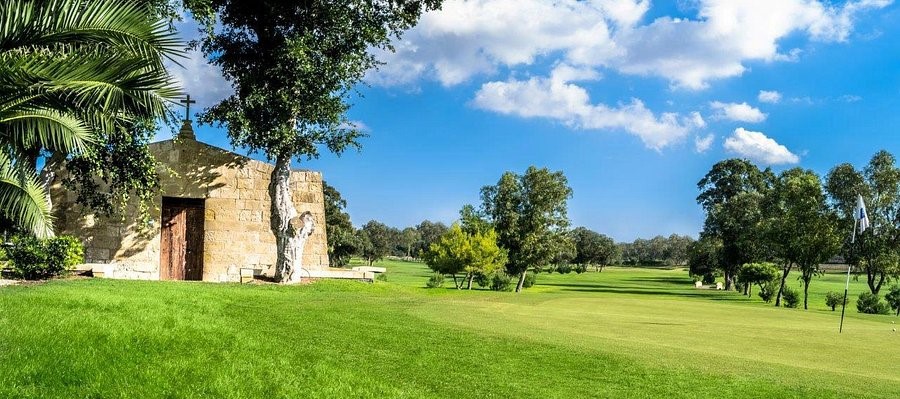There is some really great names when it comes to naming golf holes.
Famed holes that feature on the Open Championship rota while each April the focus of the golf world is the Masters at Augusta National and golf hole names that most fans of the ancient club-and-ball game are very familiar.
Here is a small selection of famed golf holes and some not that well known.
* The Road Hole – 17th on the Old Course at St. Andrews (Long been one of the hardest holes in golf)
* Calamity Corner – 16th hole at Royal Portrush (An understatement if you’re right)
* Azalea – 15th hole at Augusta National. (The hole Sergio Garcia and his wife named their first born)
* The Postage Stamp – 8th hole at Royal Troon (Shortest par-3 in major championship golf)
* Hell’s Hole – 5th hole Balcomie course at Crail (The No. 1 index hole, so good you can buy a shirt featuring the hole)
* Wicked Lady & Old Tom’s Pulpit – 3rd & 16th holes at Askernish in the Scottish Outer Hebrides (A Old Tom gem)
* Hooker’s Horror – Sixth hole at Newcastle GC, England (No explanation needed)
* Mrs. Forman’s – 4th hole at Musselburgh (Named after the hotel that is short putt from the hole)
* Kel Nagle, Greg Norman and Peter Thomson – the respective 7th, 9th and 12th holes on the Champions course at the Sandhurst course in Melbourne, Australia (Each hole is named after a famous Australian-born male golfer)
And then there’s the Maid’s Bedroom and the par-3 sixth hole at Royal Matla Golf Club and the only golf course on the small Mediterranean island of Malta.
“The Maid’s Bedroom”?? I hear you say.
Though before we get permission to open the doors of the ‘Maid’s Bedroom’ let’s learn a little about the Mediterranean island of Matla and with thanks to Wikipedia.
The Island of Malta …

The capital of Valetta and its harbour in the foreground and with the Malta GC to the left between the harbour and airport runway
Malta is a small island country in Southern Europe located in the Mediterranean Sea. It consists of an archipelago 80 km (50 mi) south of Italy, 284 km (176 mi) east of Tunisia,and 333 km (207 mi) north of Libya.
It’s around a 90-minute flight from Rome and if flying from London you’re staring at just over three hours.
The two official languages are Maltese and English. The country’s capital is Valletta, which is the smallest capital city in the EU by both area and population. With a population of about 542,000 over an area of 316 km2 (122 sq mi), Malta is the world’s tenth-smallest country by area and the ninth most densely populated. Various sources consider the country to consist of a single urban region, for which it is often described as a city-state.
 The Mediterranean Sea and with Matla aglow (Image Visit Malta)
The Mediterranean Sea and with Matla aglow (Image Visit Malta)
Malta has been inhabited since about 5900 BC and has been ruled over by Phoenicians, Carthaginians, Greeks, and Romans in antiquity; the Arabs, Normans, and Aragonese during the Middle Ages; and the Knights Hospitaller, French, and British in the modern era.
Malta came under British rule in the early 19th century and served as the headquarters for the British Mediterranean Fleet. It was besieged by the Axis powers during World War II and was an important Allied base for North Africa and the Mediterranean.
Malta achieved independence in 1964, and established its current parliamentary republic in 1974. It has been a member state of the Commonwealth of Nations and the United Nations since independence; it joined the European Union in 2004 and the eurozone monetary union in 2008.
History of Royal Malta GC …
The Royal Malta Golf Club is the only golf course on Malta.
In quoting from the Royal Malta website the club was founded in 1888 by Lieutenant-General Sir Henry D’Oyley Torrens KCB KCMG. A career soldier, Sir Henry was commissioned as 2nd Lieutenant in the 23rd Foot, Royal Welsh Fusiliers in 1849.
His rise through the ranks was very rapid, reaching the rank of Colonel in 1864, Major General in 1869 and finally Lieutenant-General in 1884; when he was appointed to command British troops in South Africa. One of his first actions was to found the Cape Golf Club (the forerunner of Royal Cape).
Sir Henry’s final posting was as Governor and Commander-in-Chief Malta. He arrived in Malta on the 28th September 1888 and within one month he had founded Royal Malta. At the time the then Duke of Edinburgh, Prince Alfred Ernest Albert, third son of Queen Victoria, was based in Malta as Commander of the Mediterranean Fleet and became one of the founder members of the club. Hence the royal patronage from where the club gets its name.
Malta GC Golf Course …

Overhead shot of the Royal Malta GC shows also part of the huge sports complex in place about the course – Image Royal Malta GC
The 18-hole, tree-lined course is laid-out surrounding the Marsa Sporting Complex and as you can see above the complex boasts a race track and an equestrian area at the northern end of the course while there is an area set aside for archery along with netball courts, a cricket club, an athletics stadium, the home to the local Falcons Rugby Club, a frisbee area along with a tennis facility and a softball area.
And that’s just a list of the sports above ground as the complex also boasts many indoor sports.
The 18-hole, 5,616-yard, par-68 course boasts from the white tees two par-5s, 10 par-4s and six par-3s. The longest hole is the par-5 eighth old measuring a decent 510-yards and rated Index 5 while the par-3 17th, and playing to 133-yards, is the shortest and Index No. 16.
However, it’s the 166-yard par-3 6th hole that will have you grabbing your mobiles for a snap.

The Maid’s Bedroom – the famed par-3 sixth hole at Royal Malta GC – Images with thanks to Royal Malta GC
Affectionately named the Maid’s Bedroom the No. 11 ranked hardest hole requires hitting your tee shot over what is the ruins of a former 15th Century building but what ruins now remain was indeed that of a maid’s bedroom or whatever I’ve been unable to confirm with the club.
As well, whatever building was present when the hole was built also could have been further damaged by German bombing of the island during WW 11 because, as you can see, all there an archway with mounds running down either side from the height of the arch and to golf course level.
Though who’s going to argue with the name of the hole at it’s brought so many visitors to the club and will continue to do so.
Apart from any view via the walkway you take under an arch to reach the green, it’s virtually a blind tee shot that needs clear the ‘bedroom’ and get itself onto the green. It’s not the easiest shot and in playing the course some years back the holed kind of reminded me of some of the Irish and Scottish gems but minus any ancient building ruins, where you hit over a mound or the like into a blind green that is marked by a large stone or post.
What I liked in playing the hole was the anticipation after taking the walk along the path and then upon emerging from under the archway to see your Callaway Chrome Soft sitting proudly on the green.
However, there’s the opposite thoughts of not seeing your ball and immediately wondering what the Maid down with it.
There’s another reminder of Malta’s rich history is to be found at the side of the green at the 387-yard par-4 1oth hole and ranked fourth hardest.
St Mary’s chapel, better known as Ta’ Ċeppuna was built in the 15th century and it was here that Grandmaster L’Isle Adam’s funeral procession stopped overnight on August 26, 1534, before being taken the next morning resuming his final journey to Fort St Angelo in Birgu on the opposite side of the island
The chapel remained in a fair state of preservation until World War II, when it suffered considerable damage. It was subsequently repaired and the west front had to be almost entirely rebuilt. It then fell into neglect and became a target for vandals, who broke open the door and reduced it to an almost derelict building.
However it remains today and maybe for some golfers providing ‘devine intervention’ as they look to either hole out in two or avoid anything worst than par.
Those wishing to visit the Malta Golf Club are assured a warm welcome and the opportunity to play a ‘Royal’ course and there is not too many places around the Mediterranean where you can do that.
The club itself says: At par 68, the course is not one of the longest, but the apparent simplicity is deceptive as it demands accuracy off the tee and the relatively small greens are well protected. It offers a good challenge for the more experienced golfer, but at the same time is kind to the beginner.
So while not overly long whatever the length of any course you play, you must always treat it with respect as one never knows when it may jump-up and bite you.
And at the Matla Golf Club it could the Maid’s Bedroom lying in wait to slam the door shut on your golf game (smiling).
* Thank you to the Malta GC for use of the images.





